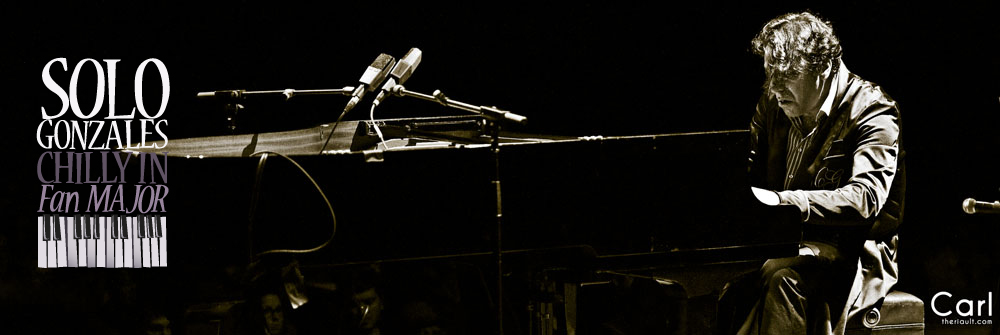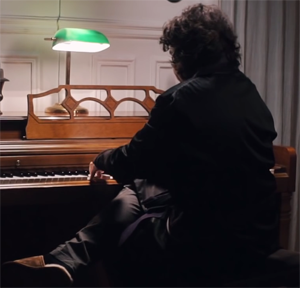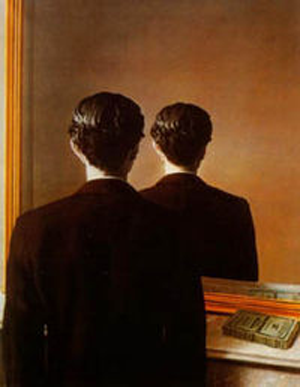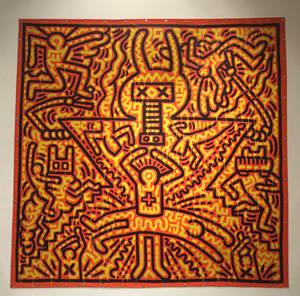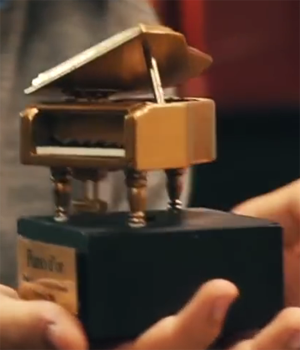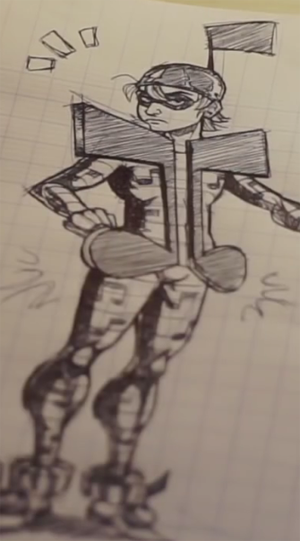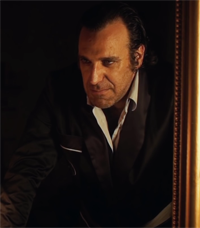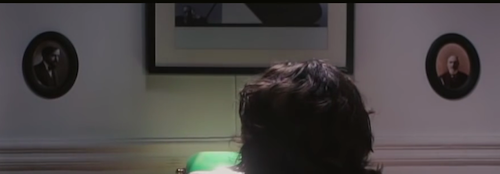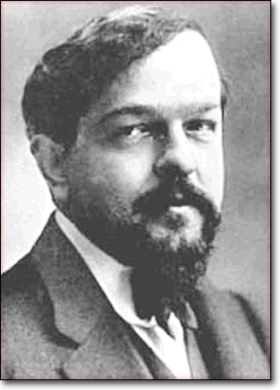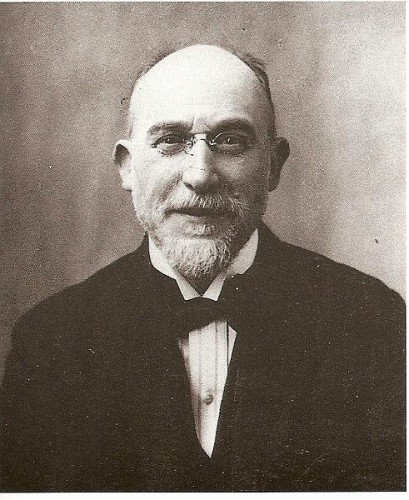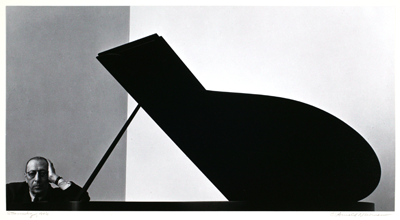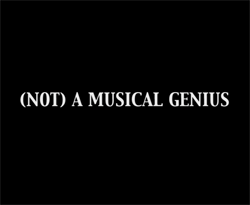 Chilly Gonzales and his long-time director Jonathan Barré have created one of the most compelling Gonzales videos to-date: (Not) A Musical Genius. At first view, the video is funny and touching: a young pre-Gonzales Gonzales has a crush on his piano teacher, who turns out to have a boyfriend. This unrequited love motivates Gonzales to form a new persona – one that will win the hearts and minds of an audience. On repeated views, there are a multitude of symbolic elements that seem to underscore a much deeper message, which we will explore in-depth.
Chilly Gonzales and his long-time director Jonathan Barré have created one of the most compelling Gonzales videos to-date: (Not) A Musical Genius. At first view, the video is funny and touching: a young pre-Gonzales Gonzales has a crush on his piano teacher, who turns out to have a boyfriend. This unrequited love motivates Gonzales to form a new persona – one that will win the hearts and minds of an audience. On repeated views, there are a multitude of symbolic elements that seem to underscore a much deeper message, which we will explore in-depth.
Opening
In the opening shot, we slowly zoom in on a character playing the piano in Gonzales’ characteristic style: robe and slippers, right crossed over left, slight lean over the piano, swaying to and fro to a rhythm we can’t hear. The figure is solitary and partially in shadow, with a piano lamp providing the only source of light. The Rudolph Wurlitzer spinet piano appears to be too small for the figure and the room, but the character plays with passion regardless.
(Not) A Musical Genius
After the opening, the video cuts to the title: (Not) A Musical Genius. The use of the adverb « Not » is used to nullify the rest of the sentence, but more subtly than the sarcastic approach popularized by Wayne’s World in the 1990s, whereby the word « Not! » would be added to the end of a statement: « A Musical Genius…Not! » As Gonzales explained to Stereogum:
First of all, I’m not a musical genius…I like that it makes people choose a side …I like the idea that anyone can become the musician, that everyone understands there’s this magical thing. So calling myself a musical genius is aspirational…It’s like you have to admit that there is something highly unnatural about performing and presenting yourself as public person, but this is where you find the truth: in people’s fantasies. So I really want to be a musical genius. That’s why Chilly Gonzales is a musical genius. Because Chilly Gonzales is my fantasy.
During the Chambers tour, Gonzales would introduce (Not) A Musical Genius by explaining that it would have been better to have his audience and critics call him a musical genius, instead of assuming the moniker himself. The video examines the origins of Chilly Gonzales, based on relentless work and a grudge-based drive, but not necessarily from a « childhood genius » perspective.
The Crush
The next sequence has the young Gonzales staring longingly at his lovely piano teacher. He is obviously taken with her, and she is likely oblivious to his feelings. Of note, the shirt the young Gonzales wears is stereotypically Canadian: a bold plaid print that was taken to such an extreme, that people in the 1980s would literally wear a bold red and black plaid « Lumberjack » shirt (a fleece cotton/polyester blend) as their winter jacket.
There is a Wittner Maelzel pyramid metronome sitting atop a few Henry Lemoine books on the piano, but we can’t see the titles. The quality of the metronome and the « imported » piano books imply that the student takes piano seriously.
Reproduction interdite
If you look closely at one particular shot of the piano teacher, there’s a famous and telling painting situated on the wall behind her head. Most people are familiar with Belgian surrealist painter René Magritte’s Le fils de l’homme (The Son of Man), which features a man in an overcoat and bowler hat obscured behind a floating green apple. René Magritte painted many imaginative scenes, one of which is titled La reproduction interdite (Not to be reproduced), and hangs on the young pianist’s bedroom wall.
The painting is significant in relation to Gonzales’ persona in many ways. Magritte was a fan of mirrors and their curious ability to conceal or obscure reality through reflection and included many of them in his works. In La reproduction interdite, we see a paradox: we should see the man’s face in the mirror, but instead we see our own view reflected back; but the book on the table is reflected in the mirror correctly. The book is The Narrative of Arthur Gordon Pym of Nantucket by Edgar Allen Poe – one of Magritte’s favourite authors. The book mixes dream and reality, which may have resonated with Magritte and the dual nature of the painting. The painting itself speaks to our own journey of self-discovery – we have a deep desire to discover what’s behind what we can see to reveal deeper and hidden layers or meanings and learn something about ourselves. The message for Gonzales (and ourselves) is that reality is unique to each individual; there’s no reason why the seemingly contradictory states of fantasy and reality cannot coexist as one.
Practice Montage
In the next sequence, we see the young Gonzales donning a cardigan (another Gonzales trait) and practising (actually, devouring) music with increasing difficulty. Double octave scales in multiple keys, 8-octave piano runs with both hands, and various other torturous exercises – all with the metronome increasing in tempo. He also has moments of self-reflection – lying or sitting on his bed, contemplating music, or the future.
There is a particular cut where young Gonzales is shaking the metronome in frustration. One YouTuber seemed to completely relate to this brief scene, which may reflect Gonzales’ frustration with the rigidity or possibly the limitations of playing to a metronome.
Untitled, 1983
While Gonzales is contemplating on the edge of his bed, the wide scene not only displays La reproduction interdite (cut-off, but with additional clarity), but also a small print of a very large Keith Haring poster.
The print (called Untitled) was painted in 1983 and recently was taken on tour in Europe on The Political Line exhibition (currently in San Francisco). The painting has a sense of “metamorphosis” or “duality”; a cocoon-like creature is ridden up one side of an unknown deity who oversees the emergence of a “saviour” with a red cross appearing out of a supposedly weaker individual. Transformed individuals fly above, while the rejected bodily “shells” are sent down with a telltale “X” on their chest. A young Gonzales could definitely be inspired by Haring’s painting – we all have the capability to release the inner “superhero” within us.
There’s one more painting we can see on Gonzales’ wall – a small letter “C” which appears to be stitched out of individual sections of fabric. The “C” is likely a precursor to the eventual transformation into Chilly Gonzales.
The Father
Gonzales’ father appears in the doorway – food in hand. He’s obviously concerned with the health and well-being of his son, and likely frustrated with his inability to influence at the same time. He offers the food, but is waved away, as if Gonzales is implying that artists do not have time for minutiae such as eating. It’s possible that this sequence alludes to Gonzales establishing his independence through the rejection of his father’s offer of assistance. The wide-eyed disbelief that his father displays just before he walks away seems to imply that even his own father cannot understand his son’s dedication to what is likely a difficult career choice.
The Crush – Part II
The next cut features the return of the piano teacher, now looking even more radiant dressed in evening wear. Obviously impressed with her student’s incredible progress, she gives Gonzales a big hug after he shows her an award that he won. If you squint, you can see that the award is a Piano d’or and is possibly awarded to “Jason Beck” (in fuzzy letters underneath).
Still beaming from his hug, Gonzales is leaning over the railing of his apartment and spots his piano teacher walking away, but she’s not alone. Her boyfriend (whose face is obscured by the clever placement of a railing) gives her a kiss and they walk away. Gonzales is heartbroken.
It’s possible that the piano teacher herself represents Gonzales’ relationship with classical music. He sees and learns from all the beauty and complexity within the compositions, but is ultimately disenchanted when he realizes that classical music is tied to snobbery and remains largely inaccessible to the majority of people. When it becomes apparent that classical music has other “suitors” Gonzales decides to embrace jazz and pop to ultimately incorporate those elements into classical music, thus winning over hearts and minds and beating classical at its own game.
The Plan
Motivated by a combination of sadness and revenge, Gonzales hunches over his study, where he sketches out ideas for a supervillain. The garbage can is overflowing with crumpled paper, which means that we are several iterations into his ideas. We see design for a “supernote” – donning a quarter note cap, shield, and treble clef “staff” (literally). Unsatisfied, he crumples the drawing up. We then see a character called “Pianoman” (possibly a reference to Billy Joel), consisting of a character wearing two white keys and a single black key front-and-centre. Gonzales crumples that drawing as well. Gonzales is searching for another identity – something more exciting and memorable…but he hasn’t landed on the right idea yet.
Gonzales has explored the notion of a superhero (or supervillain) in interviews, songs, and even directly in song titles (Supervillain Music, from The Unspeakable Chilly Gonzales). It’s unclear if young Gonzales creates a persona that is a superhero (saving people from the tyranny of classical music), or a superhero’s nemesis. Superheroes would have: a secret identity (well, not-so-secret in the case of Gonzales), costumes (check), iconic symbols (open, upright piano), origin stories (exactly what we are discussing), and superpowers (harmonic content and humour). It’s also possible (and likely probable) that Gonzales’ persona is a superhero and supervillain, with aspects of both coming to light (depending on the situation).
Mirror, Mirror
Gonzales then stares into his mirror, but instead of his reflection, he sees his future self staring back (the current Chilly Gonzales). Gonzales’ unwavering eyes and serious tone impart an urgency to his younger self, who seems to respond accordingly. We return to La reproduction interdite: young Gonzales completes his current quest for self-discovery and decides to make a change in his life – to assume the Chilly Gonzales persona and become a self-described musical genius.
The use of a mirror works on many levels. Gonzales’ compositions use sound to reflect his personal interpretation of reality, much in the way that mirrors create an illusion through the reflection of light. When we listen to his music, we apply our own reality, our own thoughts and dreams – the reflection is our own, which is what makes great music so personal. It’s also illusion that permits us to view and appreciate the “Gonzales” persona – a reflection of his underlying ‘true self’.
Transformation
We see young Gonzales donning his (now) trademark monogrammed robe and UGG slippers, and finally sitting down at the piano without any sheet music at all. The transformation is complete as he begins to compose his own music. Above the piano, there are three photographs that are never clearly shown. The portrait on the left is Claude Debussy, and the one on the right is Eric Satie.
Debussy – one of the central figures in the impressionistic music movement (although he disliked the term) – must have had an impact on the young Gonzales. Debussy was a follower of J.S. Bach, Liszt, and Chopin, particularly admiring their ability to create new musical forms to bring their compositions to realization.
Satie was a surrealist, dabbling in the absurd and humorous, and is considered by many to be the father of modern music. Many feel that Gonzales Solo Piano work is influenced by Satie; the portrait may be a nod to this collective thought.
The central portrait is of Igor Stravinsky by Arthur Newman, which (interestingly) forms a musical note through the combination of the piano lid and Stravinsky’s positioning. Stravinsky has been called the “superman of jazz” due to his borrowing of ostinatos and cross-rhythms from ragtime for compositions that bridged the gap between jazz and classical – someone else who may have been influential to a young Gonzales.
The young Gonzales then proceeds to play in the his current style while the video fades smoothly. Gonzales is seated in the exact same position as he originally was when the video started, possibly implying a sense of Eternal Recurrence – the end is just the beginning.
Sabbatical
Many of us can recall specific moments where we decided to make a change in our lives – going back to school, quitting a job, asking someone out – indelible mental marks that can be traced forward to define who we are today. Sometimes, exploring those defining moments can help us keep moving forward by reliving the feelings that led up to a change. Gonzales’ foray back to his genesis may be a cathartic gesture – possibly for him and his audience. His recent press release that accompanied the video included the following subject line::
« (Not A) Musical Genius » music video, last tour dates before radical sabbatical
And the following in the body of the message:
Seventeen years after leaving Canada for Europe, the man who declared « I Am Europe », returns to his home and native land to play the last Chambers shows of his world tour
It remains to be seen if the “Chilly Gonzales” origin video and the tour wrap-up & sabbatical are all signs of a major change to come. We’ll be sure to attend (and review) the last Chambers show, but we’re genuinely curious as to what all of this means for Gonzales fans.
In the meantime, there’s plenty of fantastic Gonzales music available, including a new BitTorrent version of the Berlin Octave Minds concert, including a bonus remix.
